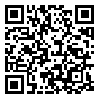Introduction: Tooth impaction is a common anomaly. Several local and systemic factors may result in tooth impaction. Among the permanent dentition third molar, maxillary canine, maxillary and mandibular premolar and maxillary central incisors have the most probability of impaction. The aim of this study was to determine the prevalence of impacted teeth in the patients referred to Yazd Dental School in 1392 to 1394.
Methods: In this retrospective study, 600 digital panoramic radiographies of the patients over 15 years old were examined. The patients with dent of axial abnormalities, other syndromes or particular pathology, edentulous and traumatized patients were extracted from the study. Data were statistically analyzed using SPSS software (version 22.0 for Windows, Chicago, IL, USA), Chi-square and Fisher's exact tests.
Results: Out of total 600 patients were examined, 99 patients (16.5%) presented with at least one impacted tooth. Mandibular third molars were the most prevalent (52.26 %) impacted teeth, followed by impacted maxillary third molar (27.7%), maxillary canine (13.8%) and mandibular canine (4.86%). The highest prevalence of tooth impaction was seen in 22-30 years age group. There was no statistically significant difference between tooth impaction and gender (p-value=0.91).
Conclusion: Tooth impaction has a relatively high prevalence in Yazd (16.5%). The highest prevalence of tooth impaction is seen in third molars followed by canine teeth of both jaws. So, in case of delayed eruption of canine teeth, radiographic examination is suggested to evaluation their impaction and applying proper managements.
Received: 2016/02/15 | Accepted: 2016/05/14 | Published: 2017/01/14
| Rights and permissions | |
 |
This work is licensed under a Creative Commons Attribution-NonCommercial 4.0 International License. |


